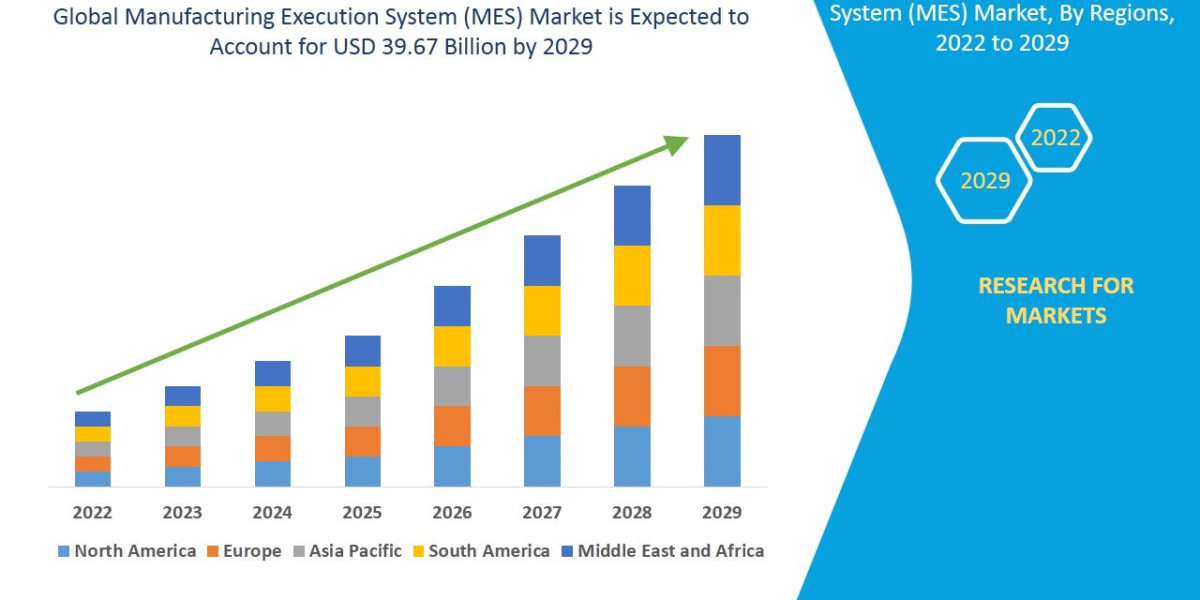Introduction
The global veterinary medicine market plays a pivotal role in safeguarding animal health, ensuring food safety, and supporting the broader agricultural and pet care industries. With growing demand for animal-derived food products and a surge in pet ownership worldwide, veterinary medicine has emerged as a cornerstone of both public health and economic stability. The sector encompasses pharmaceuticals, vaccines, diagnostic tools, and nutritional supplements designed to prevent, diagnose, and treat diseases across companion and livestock animals.
In today’s economy, the importance of veterinary medicine extends beyond animals—it influences global food supply chains, zoonotic disease prevention, and the mental well-being of millions of pet owners. The market’s growth is being driven by innovations in biotechnology, a rise in animal health awareness, and the increasing willingness of pet owners to spend on advanced treatments. This report provides a comprehensive analysis of the veterinary medicine market, examining its current state, growth potential, challenges, segmentation, and future outlook.
Source - https://www.databridgemarketresearch.com/reports/global-veterinary-medicine-market
Market Overview
The veterinary medicine market encompasses a wide range of products and services, including vaccines, antiparasitic drugs, antibiotics, anesthetics, feed additives, and diagnostic solutions. Historically, the market was heavily focused on livestock health due to its impact on food production and public health. However, in recent decades, companion animal care has grown substantially as pet humanization and veterinary healthcare spending continue to rise.
According to industry estimates, the global veterinary medicine market was valued at over USD 35 billion in 2023 and is projected to expand at a compound annual growth rate (CAGR) of around 6–7% between 2024 and 2030. North America and Europe currently dominate due to advanced veterinary healthcare infrastructure and strong consumer spending on pet care. Meanwhile, Asia-Pacific is emerging as a fast-growing region, supported by rapid urbanization, rising income levels, and expanding livestock production.
The current landscape reflects a market in transition—shifting from primarily livestock-focused healthcare to a balanced mix of livestock and companion animal medicine. With rising awareness of zoonotic diseases such as avian influenza and rabies, the role of veterinary medicine in global public health continues to expand.
Market Drivers and Opportunities
Several key factors are fueling the growth of the veterinary medicine market:
Rising Pet Ownership and Humanization of Pets
Globally, households are increasingly treating pets as family members, leading to higher spending on veterinary healthcare, preventive medicine, and wellness solutions.Growing Demand for Animal Protein
Expanding populations and changing diets are driving demand for meat, milk, and eggs. This trend boosts the need for veterinary medicines to maintain healthy livestock herds and ensure food safety.Zoonotic Disease Prevention
Events like the COVID-19 pandemic have heightened awareness of animal-to-human disease transmission. Governments and organizations are investing more heavily in veterinary medicine to safeguard public health.Technological Innovation
Advances in biotechnology, molecular diagnostics, and digital veterinary platforms are creating new treatment modalities. Precision medicine, AI-driven diagnostics, and tele-veterinary services are opening new business opportunities.Expanding Emerging Markets
Rising income levels and agricultural modernization in Asia-Pacific, Latin America, and Africa are creating new growth avenues for veterinary pharmaceutical companies.
For businesses and investors, these drivers translate into opportunities in companion animal therapeutics, preventive healthcare, precision diagnostics, and digital veterinary solutions.
Market Challenges and Restraints
Despite strong growth prospects, the veterinary medicine market faces several challenges:
Regulatory Barriers
Veterinary medicines undergo strict regulatory approval processes, which can delay product launches and increase development costs.Antimicrobial Resistance (AMR)
The misuse of antibiotics in animals is leading to global concerns about AMR, prompting tighter regulations and reducing over-the-counter sales in some regions.High R&D Costs
Developing new veterinary drugs and vaccines requires substantial investment in clinical trials, research facilities, and compliance testing.Supply Chain Vulnerabilities
Global disruptions, such as the COVID-19 pandemic and geopolitical tensions, have highlighted vulnerabilities in veterinary supply chains.Limited Veterinary Infrastructure in Developing Regions
In many low- and middle-income countries, inadequate veterinary infrastructure limits market penetration and accessibility of advanced treatments.
These challenges could slow growth in certain markets, requiring strategic adaptation by manufacturers and service providers.
Market Segmentation Analysis
By Product Type
Pharmaceuticals: Antibiotics, antivirals, parasiticides, anti-inflammatories.
Vaccines: Widely used in livestock and companion animals to prevent infectious diseases.
Feed Additives and Supplements: Enhance nutrition and immunity in livestock.
Diagnostics: Rapid testing kits, molecular diagnostics, and imaging technologies.
Dominant Segment: Pharmaceuticals hold the largest share, while diagnostics are emerging as a fast-growing category due to the rise of preventive healthcare.
By End-User Application
Companion Animals: Dogs, cats, horses.
Livestock Animals: Cattle, poultry, swine, sheep, goats.
Dominant Segment: Companion animal medicine is experiencing rapid growth due to pet humanization, whereas livestock remains critical for food security.
By Distribution Channel
Veterinary Hospitals and Clinics
Retail Pharmacies
Online Platforms
Emerging Trend: Online veterinary pharmacies are expanding quickly, driven by convenience and e-commerce adoption.
By Region
North America: Largest market, strong pet care expenditure, advanced veterinary infrastructure.
Europe: High regulatory standards, robust demand for companion animal healthcare.
Asia-Pacific: Fastest-growing, fueled by livestock expansion and urban pet adoption.
Latin America & Middle East/Africa: Growing demand, but hindered by infrastructure gaps.
Competitive Landscape
The veterinary medicine market is highly competitive, with multinational corporations and regional players vying for market share. Major companies include:
Zoetis Inc.
Elanco Animal Health
Boehringer Ingelheim Animal Health
Merck Animal Health
Ceva Santé Animale
Virbac
Recent industry moves include mergers, acquisitions, and partnerships aimed at strengthening product portfolios and expanding geographic reach. For example, leading companies are investing in precision diagnostics and vaccine R&D to meet rising demand.
Strategies for maintaining competitiveness include:
Expanding companion animal product lines.
Leveraging AI and telehealth platforms.
Focusing on sustainability and reducing antibiotic dependence.
Entering high-growth emerging markets.
Future Outlook and Trends
The veterinary medicine market is poised for significant transformation over the next decade:
Digitalization of Veterinary Care: Tele-veterinary consultations, AI-driven diagnostics, and mobile apps are streamlining animal healthcare delivery.
Personalized Medicine: Tailored therapies for pets, including genomic testing and precision drug development, are gaining traction.
Sustainable Livestock Practices: Pressure to reduce antibiotic use is fueling the adoption of vaccines, probiotics, and alternative therapies.
Global Public Health Integration: Veterinary medicine will play a larger role in global health frameworks as the “One Health” approach—linking human, animal, and environmental health—gains traction.
Regional Growth Hotspots: Asia-Pacific and Latin America are expected to be key growth drivers, with livestock expansion and pet adoption both rising.
By 2030, the market could surpass USD 55–60 billion, with companion animal care accounting for an increasing share.
Conclusion
The veterinary medicine market is undergoing rapid evolution, driven by rising pet ownership, expanding livestock production, technological innovation, and increasing global awareness of animal and public health. While regulatory hurdles and antimicrobial resistance present challenges, the sector remains one of the most resilient and forward-looking in the healthcare industry.
For stakeholders, investing in veterinary medicine is not only financially rewarding but also socially impactful—contributing to food safety, disease prevention, and the well-being of both animals and humans. With ongoing innovation and rising demand, the future of the veterinary medicine market is both promising and transformative.
FAQ Section
1. What is the current size of the veterinary medicine market?
As of 2023, the global veterinary medicine market is valued at over USD 35 billion and is projected to grow at a CAGR of 6–7% through 2030. This growth is fueled by pet healthcare demand and livestock productivity needs.
2. What are the key drivers influencing growth in this market?
Major growth drivers include rising pet ownership, increased demand for animal protein, technological innovation in diagnostics and therapeutics, and heightened awareness of zoonotic disease prevention.
3. Which regions dominate the veterinary medicine market?
North America and Europe currently lead the market due to advanced veterinary healthcare systems and high spending on companion animal care. Asia-Pacific, however, is emerging as the fastest-growing region.
4. Who are the major players in the industry?
Leading companies include Zoetis, Elanco, Merck Animal Health, Boehringer Ingelheim Animal Health, Ceva Santé Animale, and Virbac. These players dominate through innovation, global presence, and diversified product portfolios.
5. What are the latest trends shaping the future of this market?
Key trends include the rise of tele-veterinary platforms, precision medicine, sustainable livestock healthcare, and integration of veterinary medicine into public health initiatives like the “One Health” approach.
6. What challenges could slow down growth in this sector?
Challenges include stringent regulatory processes, high R&D costs, antimicrobial resistance, and limited veterinary infrastructure in some developing regions.
7. How can businesses benefit from investing in the veterinary medicine market?
Businesses can tap into growing demand for pet care, livestock productivity solutions, and innovative diagnostic technologies. Companies that innovate and expand into emerging markets stand to gain significant competitive advantage.
Browse More Reports:
Global Fleet Management Market
Global Digital Banking Market
Global Perfume Market
Global Pro AV (Audio-Visual) Market
Global Business Process Outsourcing (BPO) Market
Saudi Arabia Fleet Management Market
Global Alcoholic Beverages Market
Global Healthy Snacks Market
India Business Process Outsourcing (BPO) Market
Global Edible Cutlery Market
Global Manufacturing Execution System (MES) Market
Global Veterinary Medicine Market
Europe Business Process Outsourcing (BPO) Market
Global Biofuels Market
Global Craft Beer Market
Global Recreational Vehicle (RV) Awnings Market
Global Shisha Tobacco Market
Global Sports Nutrition Market
Global D-limonene Market
Global Essential Oils Market
About Data Bridge Market Research:
An absolute way to forecast what the future holds is to comprehend the trend today!
Data Bridge Market Research set forth itself as an unconventional and neoteric market research and consulting firm with an unparalleled level of resilience and integrated approaches. We are determined to unearth the best market opportunities and foster efficient information for your business to thrive in the market. Data Bridge endeavors to provide appropriate solutions to the complex business challenges and initiates an effortless decision-making process. Data Bridge is an aftermath of sheer wisdom and experience which was formulated and framed in the year 2015 in Pune.
Contact Us:
Data Bridge Market Research
US: +1 614 591 3140
UK: +44 845 154 9652
APAC : +653 1251 975
Email:- corporatesales@databridgemarketresearch.com








